Shopping has changed unimaginably in 2020 and perhaps forever, with online spending at record levels after Covid-19 forced shop doors to close for over three months during lockdown.
In recent weeks shops have begun opening up their doors and welcoming back their customers. We wanted to discover how the public is feeling about going back to shops so we asked our countrywide team of insight6 researchers how they felt.
More than 200 researchers gave us their views. Here are the headlines from the research:
Overall Confidence

When asked ‘How confident are you about visiting your local town centre?’, the results were mixed. Only 25% were fully confident – rated 9 or 10 out of 10, and 45% were not confident – rating 6 out of 10 or less.
The average score was 6.6 out of 10, suggesting that there is trepidation out there, plus plenty of work to do to build confidence.
There were lots of comments that support these ratings. The words used overwhelmingly in the survey were ‘social distancing’, ‘enforce’, and ‘ensure’. There was a clear feeling within the results that social distancing must be in place on the street and in shops, and that the safety measures must be enforced by shop staff and/or the authorities.
Shopping Intentions
We asked researchers whether the Pandemic would mean they are more or less likely to shop online. Before Covid-19, online sales accounted for approximately 19% of the market, and had hovered around that mark for some time, a measure published back in May said this had increased to 25%.
Our survey showed that just over 40% expected to shop more online, with 49% expecting to shop online at the same levels. Only 11% expect online shopping to decrease. It is no surprise that it would appear that online shopping is only likely to increase.
The increase creates further challenges for High Street businesses already feeling the strain. There have been a number of initiatives to get people out and about, particularly in the Food and Beverage sector, but footfall is still low.
We also asked people about their intentions to shop locally and 52% said they would shop more locally. Some of the anecdotal evidence that supported this was:
- A number of researchers told us that they would go shopping less often and closer to home
- There is mistrust of large shops, shopping centres and malls
- People would like to support local businesses
- They will go to shops they know well and take safety seriously – back to the enforcement point
What does this mean for the High Street?
On the face of it, this is bad news for High Street businesses. The mix of low footfall, more people used to using online services than before Covid19, and over half of people reluctant to venture out too far would appear to put High Street businesses in a predicament.
However, there are signs that people are waiting to be influenced, the businesses that make sure people know that safety is paramount, and will be enforced rigidly stand more chance of attracting shoppers. Overlay that with a great customer experience, which is better than online shopping, there is light at the end of the tunnel.
insight6 Top Tips for Thriving in a “new normal”
- Make sure people know you are open, and you have put in place all possible safety measures – shout about it online, social media, your website
- Make sure your staff are ready to enforce safety measures, and it can be done in a nice way – no exceptions
- Make sure the customer experience is excellent, people miss product demonstrations, looking and feeling, choosing, discussing suitability, getting advice etc.
- Encourage customers to share their positive views on the new experience on social media
If you would like to learn more about how we can partner your business to measure and transform your customer experience to increase your footfall and customer loyalty then simply fill in the form below and your local Customer Experience Specialist will be in touch.
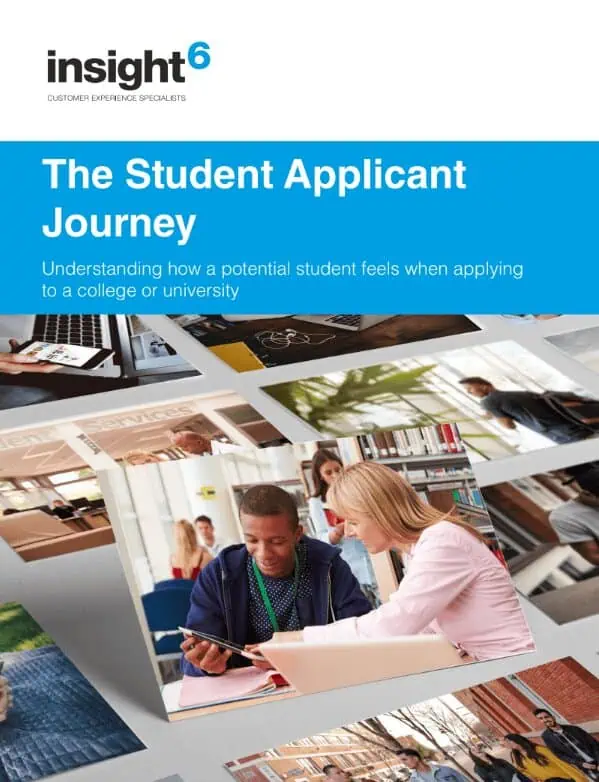 insight6 has completed a comprehensive study to understand how potential students feel when applying to UK colleges and universities.
insight6 has completed a comprehensive study to understand how potential students feel when applying to UK colleges and universities. 




 Because of the simplicity, we have received a great response from our customers so instant insight has given us a great understanding of how our customers feel about the service and how likely they are to recommend us.
Because of the simplicity, we have received a great response from our customers so instant insight has given us a great understanding of how our customers feel about the service and how likely they are to recommend us. We have a number of branches across Sussex so it is really beneficial that we can filter the data to view our results separately for each branch, allowing us to spot trends.
We have a number of branches across Sussex so it is really beneficial that we can filter the data to view our results separately for each branch, allowing us to spot trends.

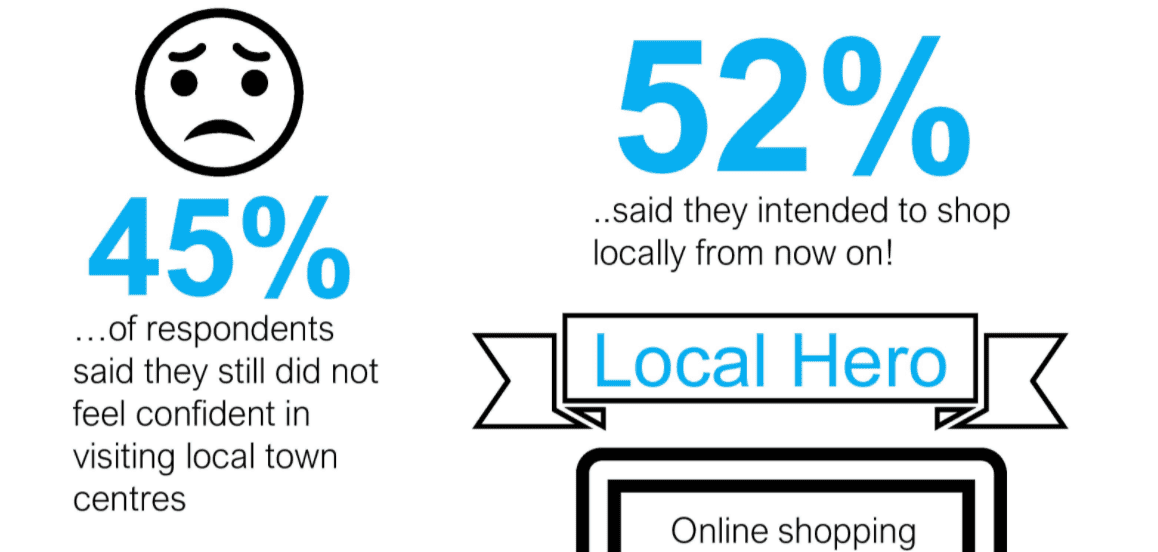

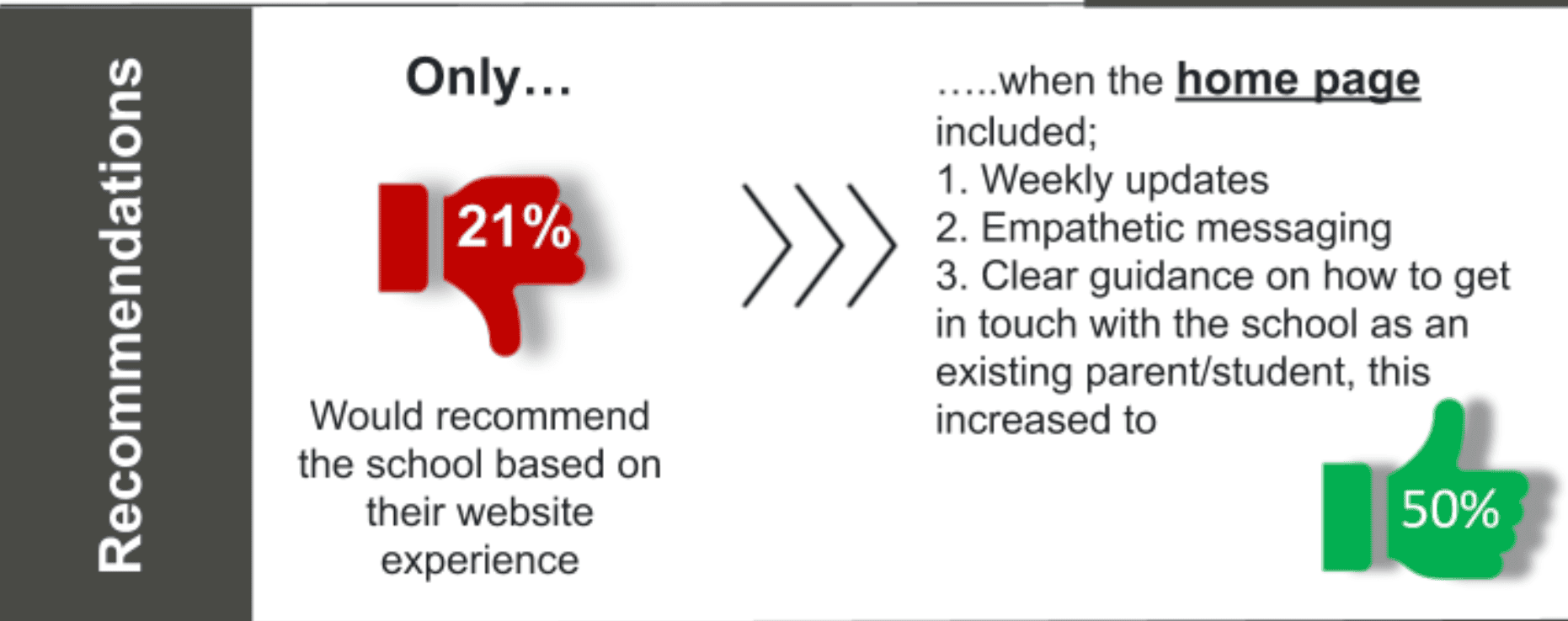
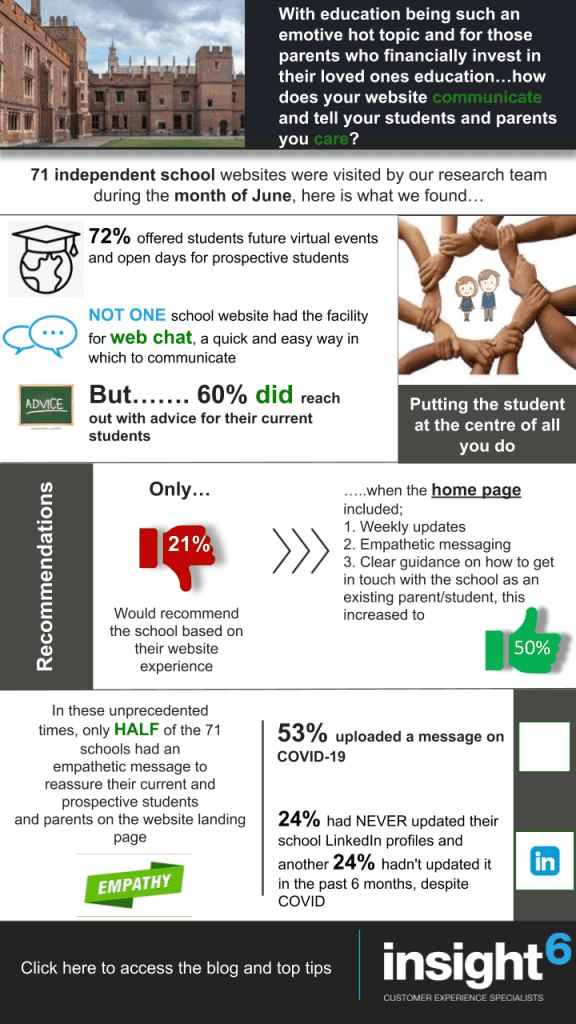 With lockdown and social distancing impacting the ability of independent schools to conduct tours and host open days, the education sector is no different. This presents a huge opportunity for schools to use websites as a shop window to give parents and prospective students a flavour of what life will be like if they choose to enrol at the school.
With lockdown and social distancing impacting the ability of independent schools to conduct tours and host open days, the education sector is no different. This presents a huge opportunity for schools to use websites as a shop window to give parents and prospective students a flavour of what life will be like if they choose to enrol at the school.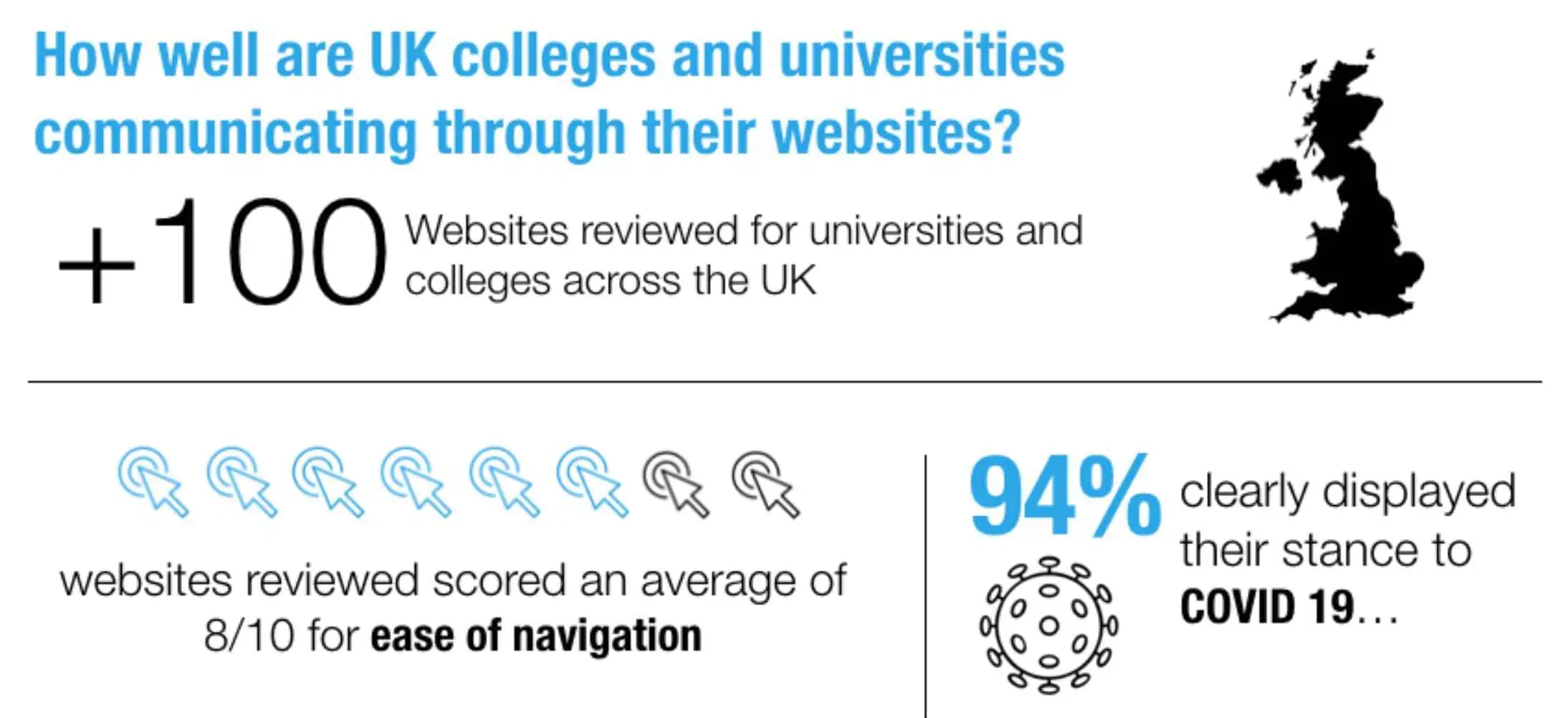
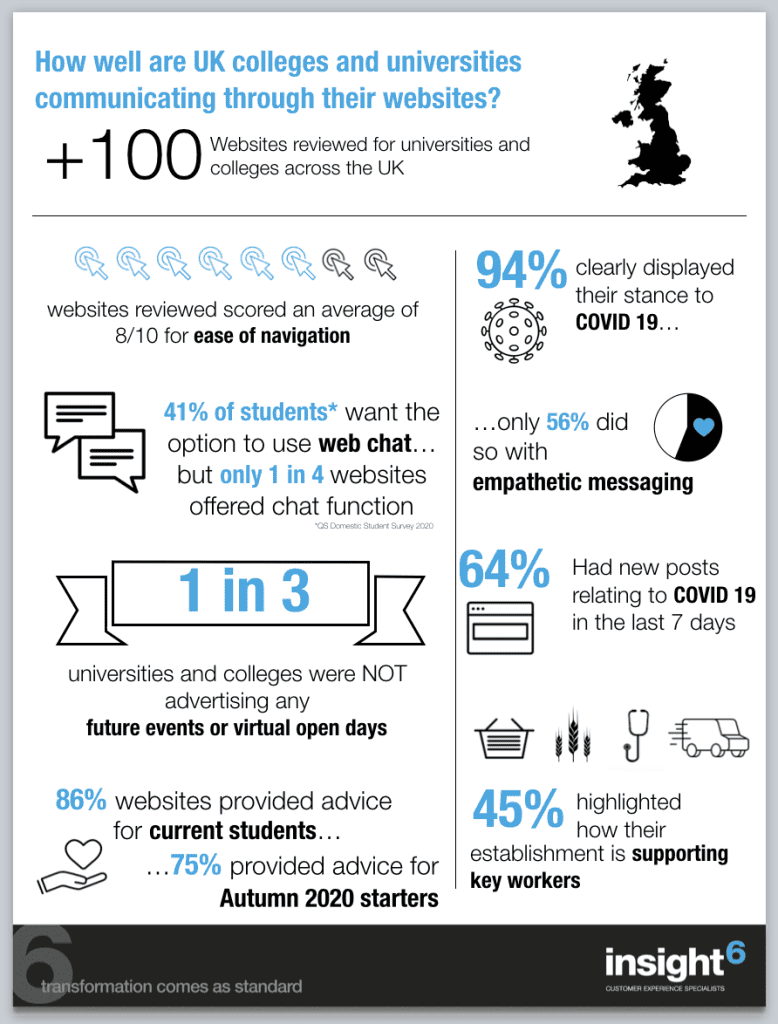 Over the past couple of months, businesses across the UK have had to find ways to adapt to the lockdown measures in place in response to COVID-19. The education sector is no different and we have already seen some major changes in the way colleges and universities are operating, including the decision by Cambridge University to run all lectures remotely for the 2020/21 year.
Over the past couple of months, businesses across the UK have had to find ways to adapt to the lockdown measures in place in response to COVID-19. The education sector is no different and we have already seen some major changes in the way colleges and universities are operating, including the decision by Cambridge University to run all lectures remotely for the 2020/21 year.